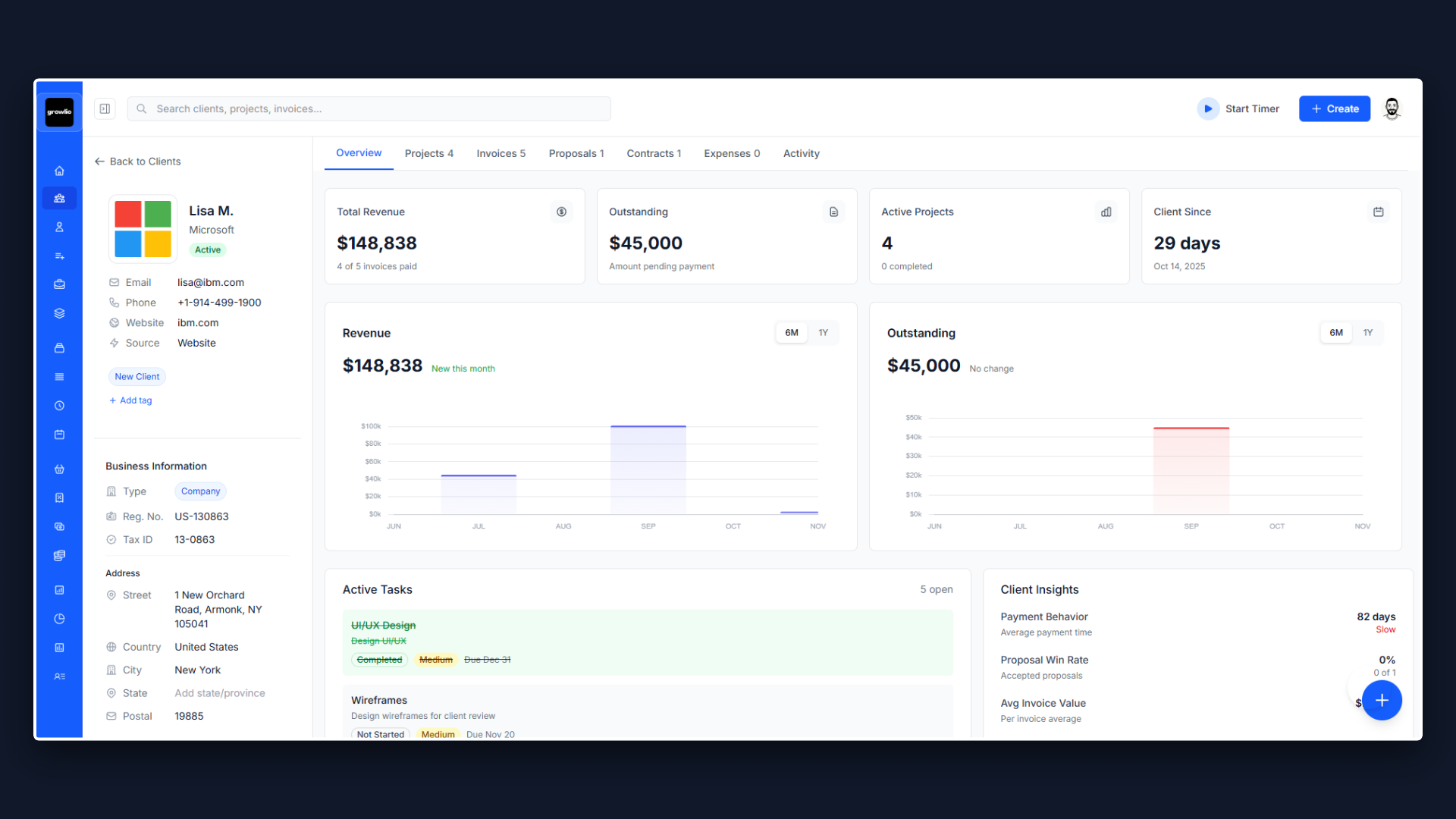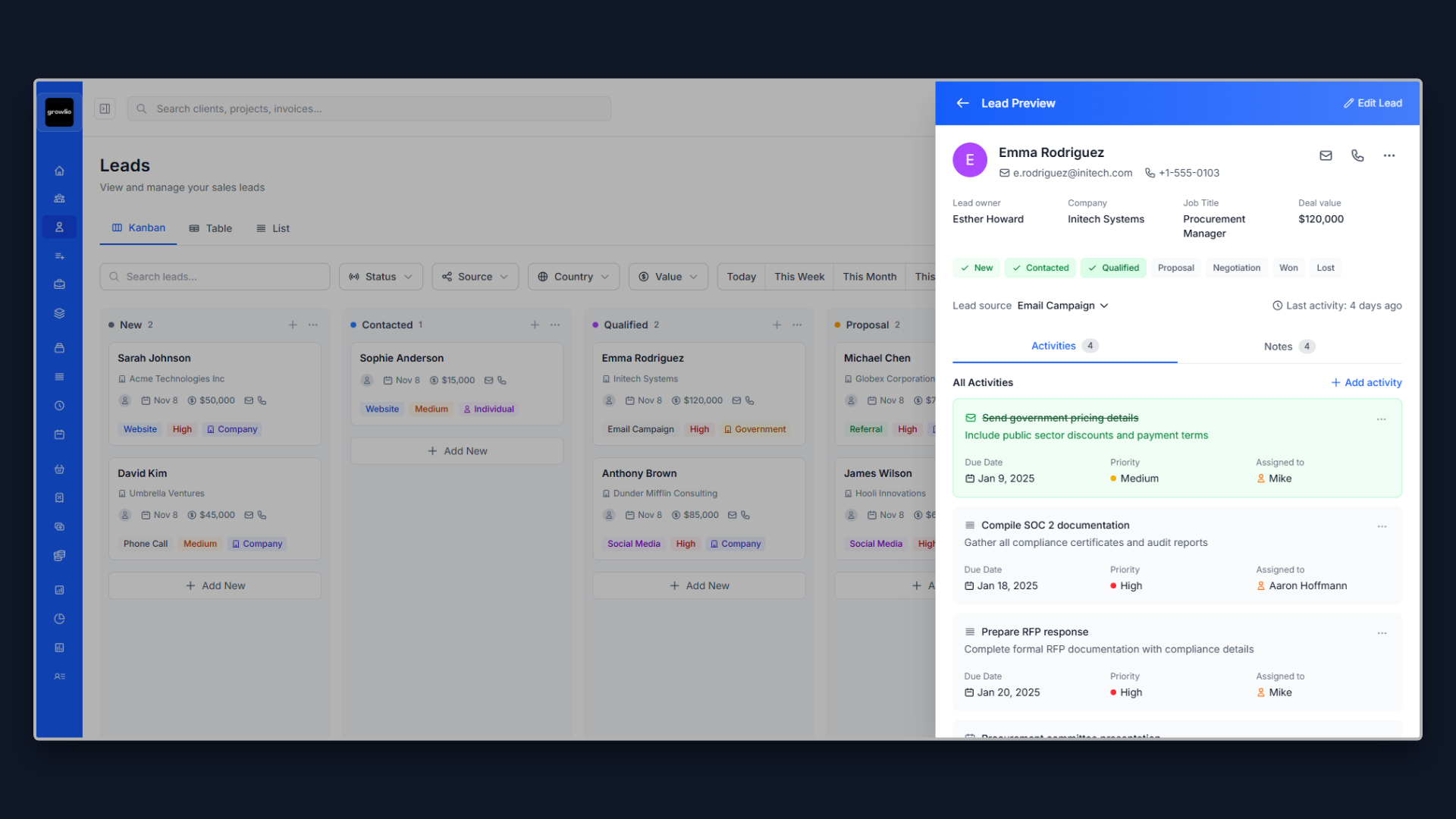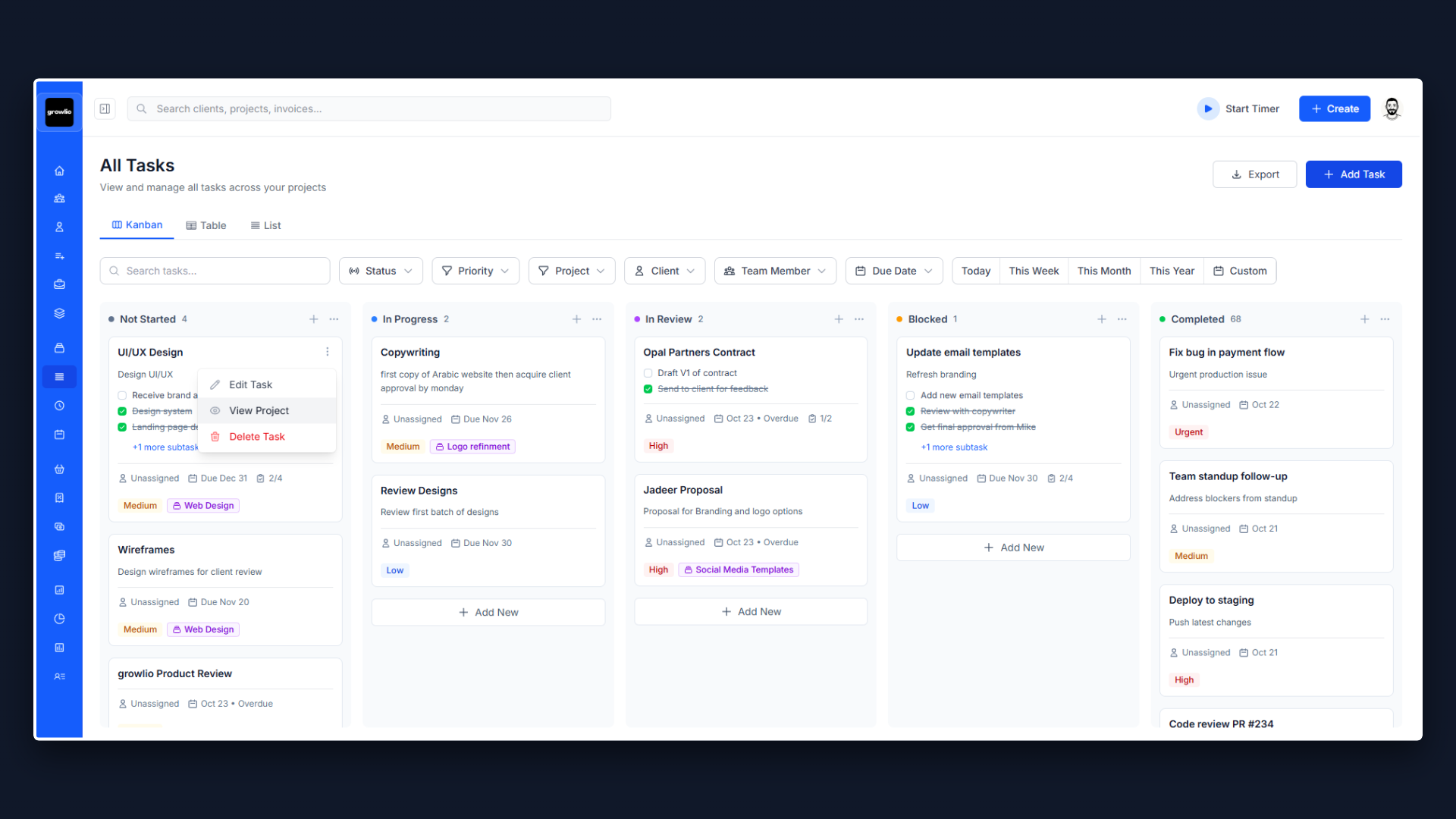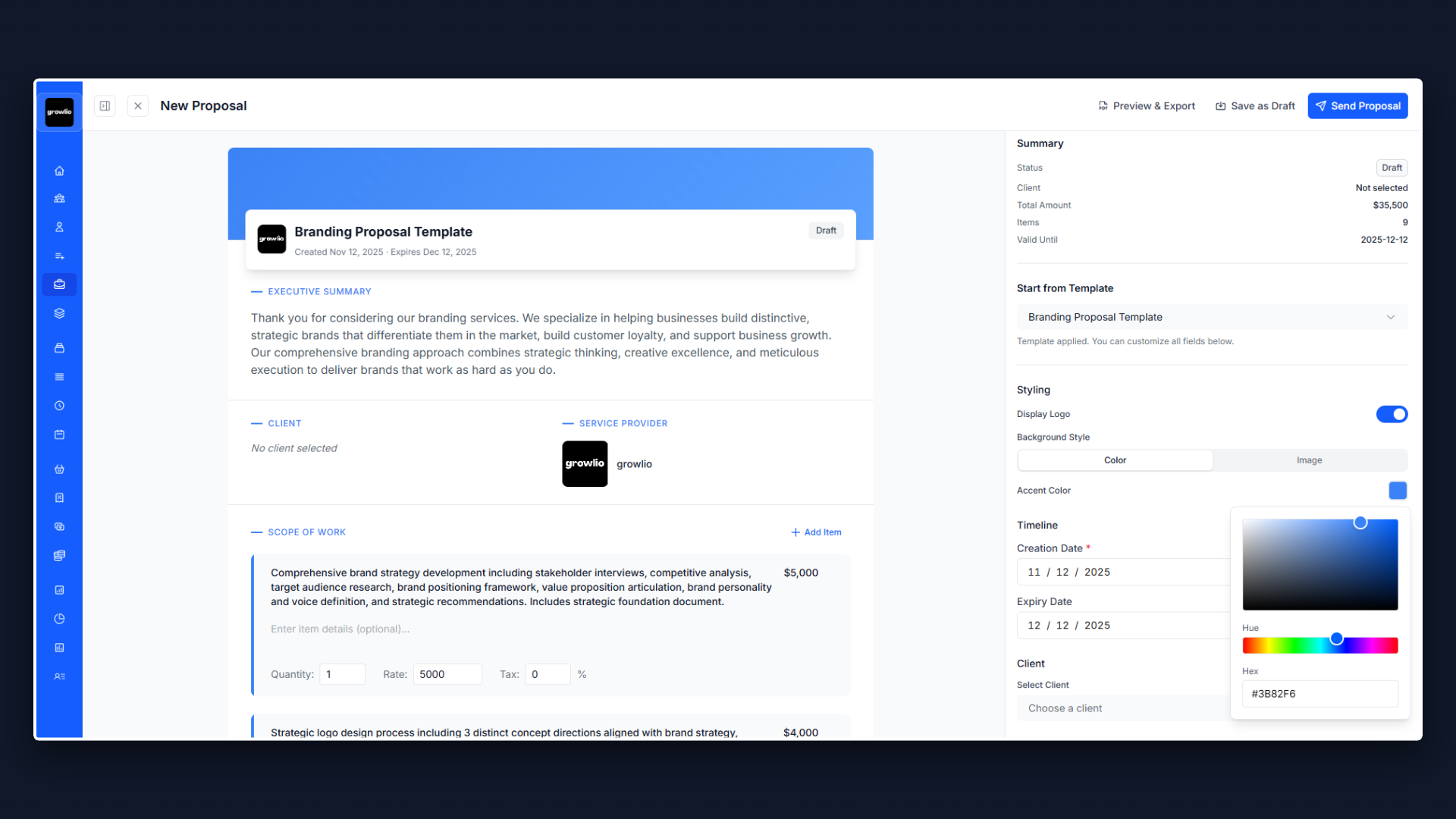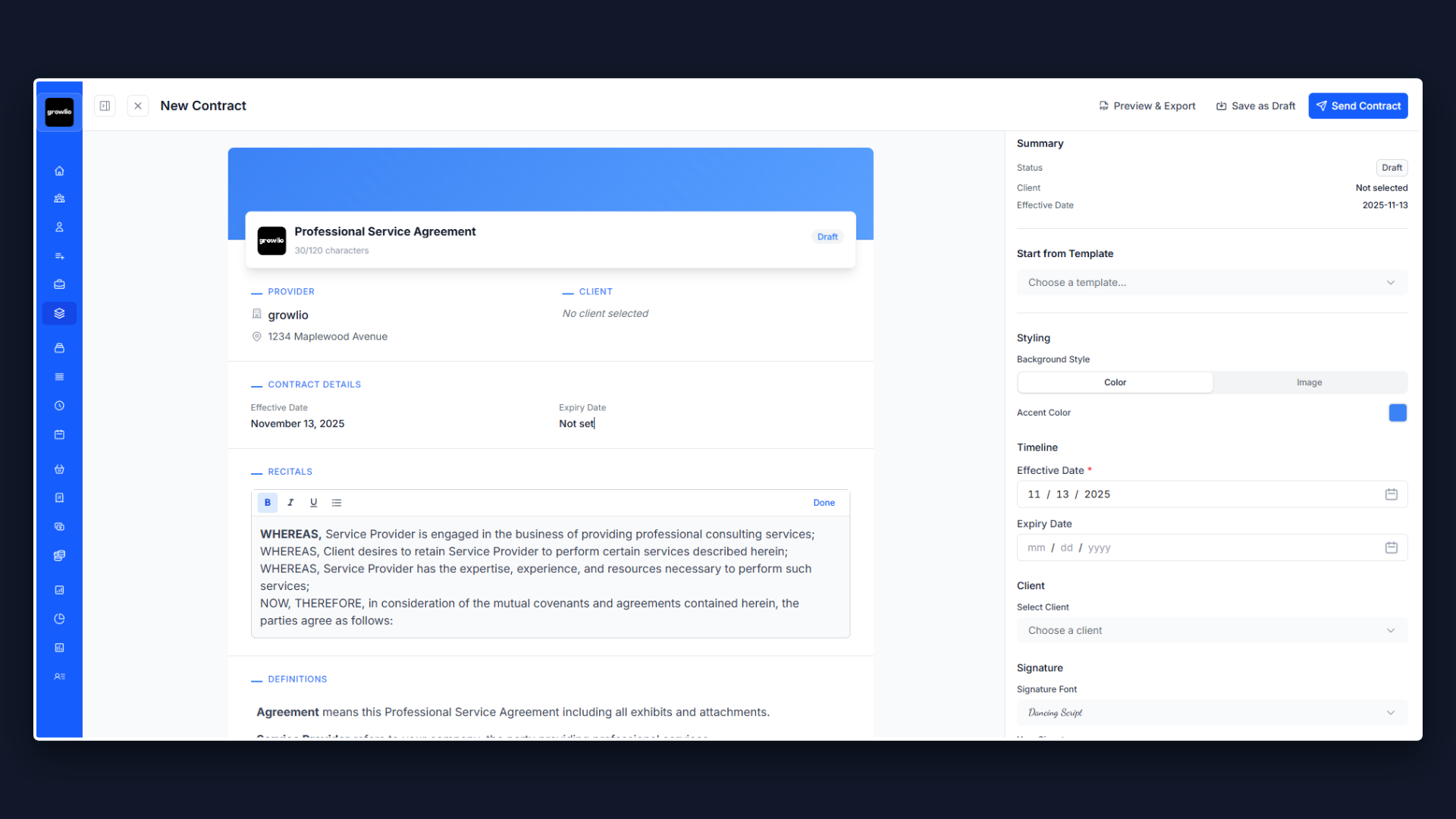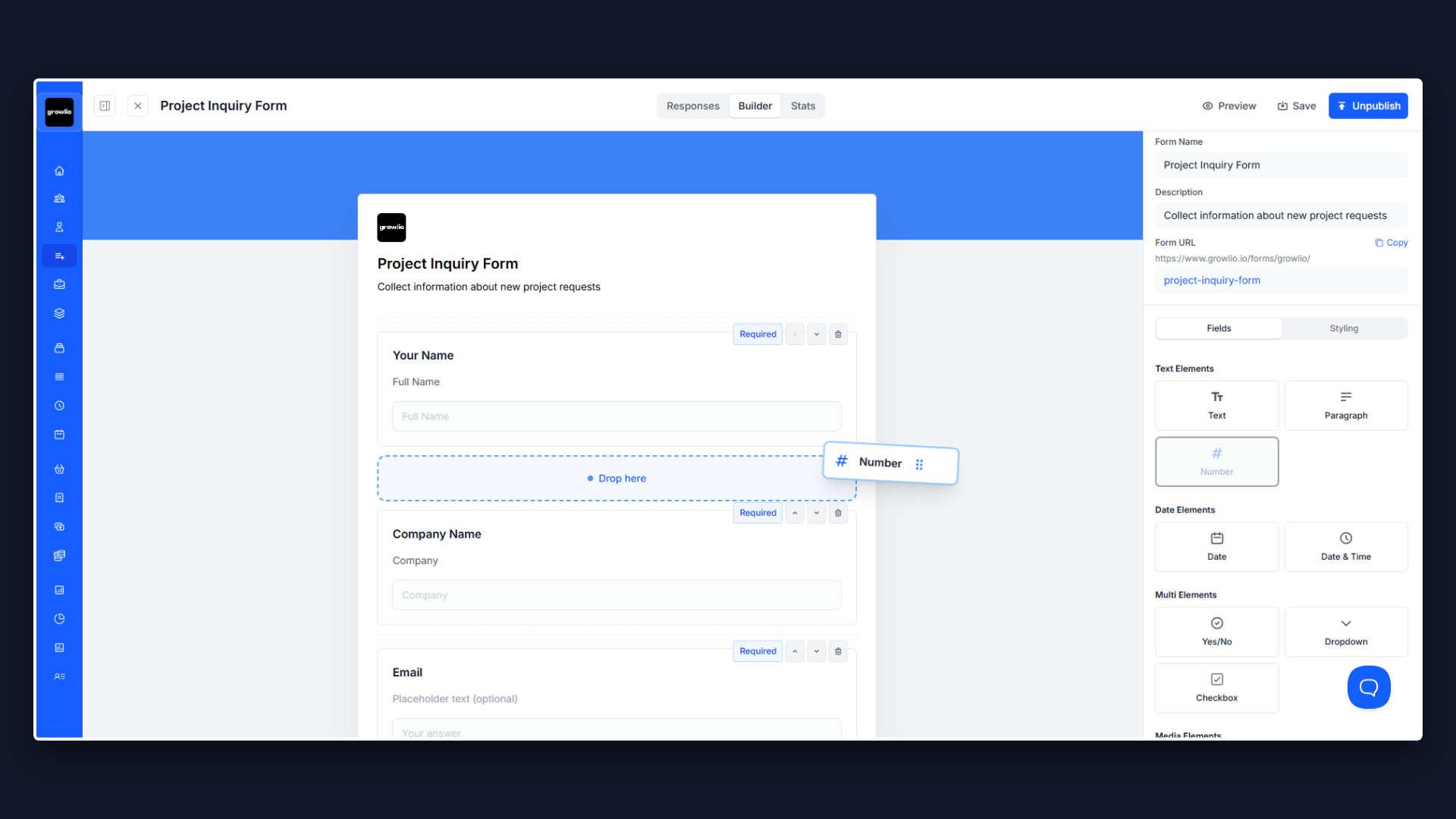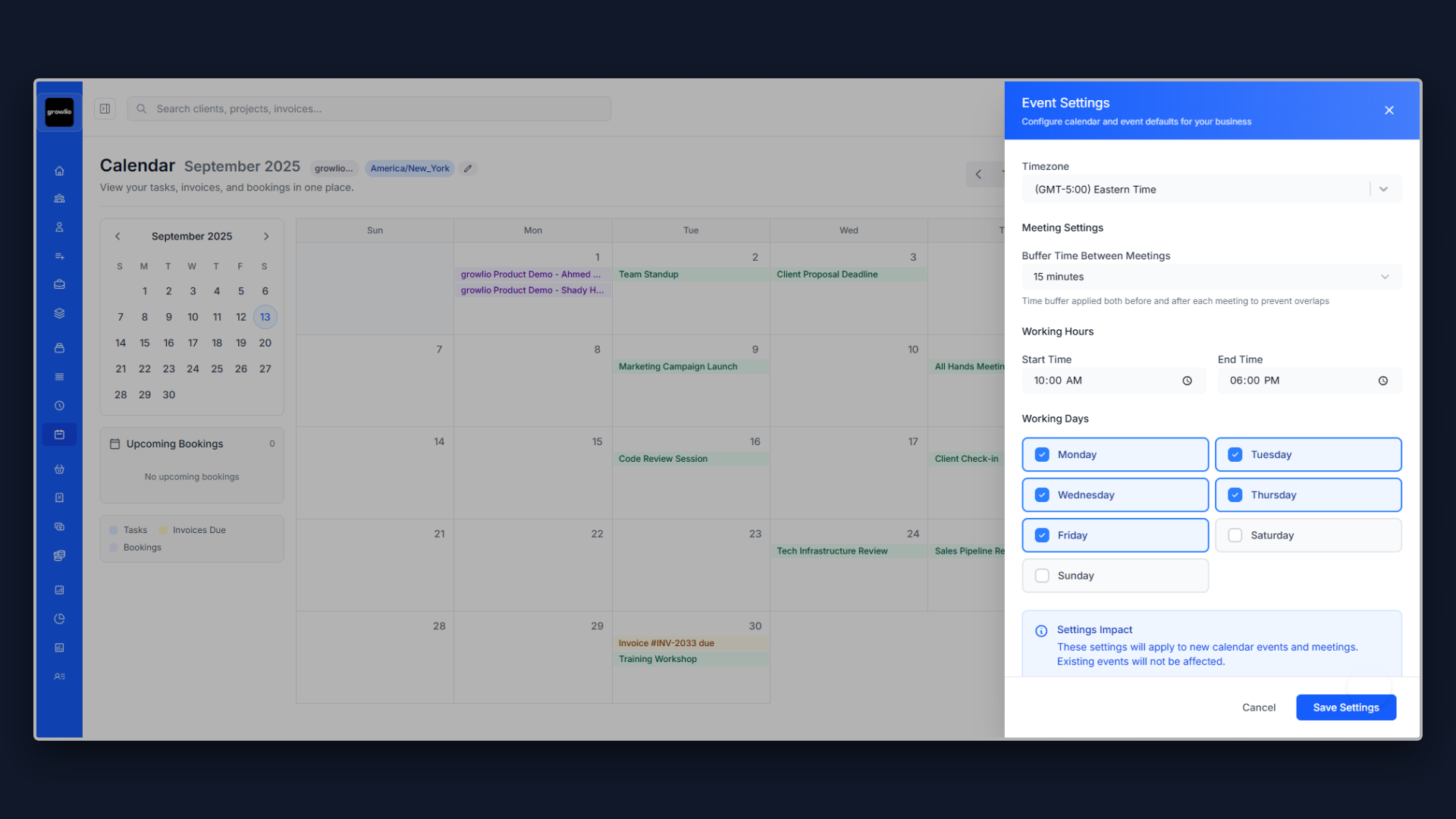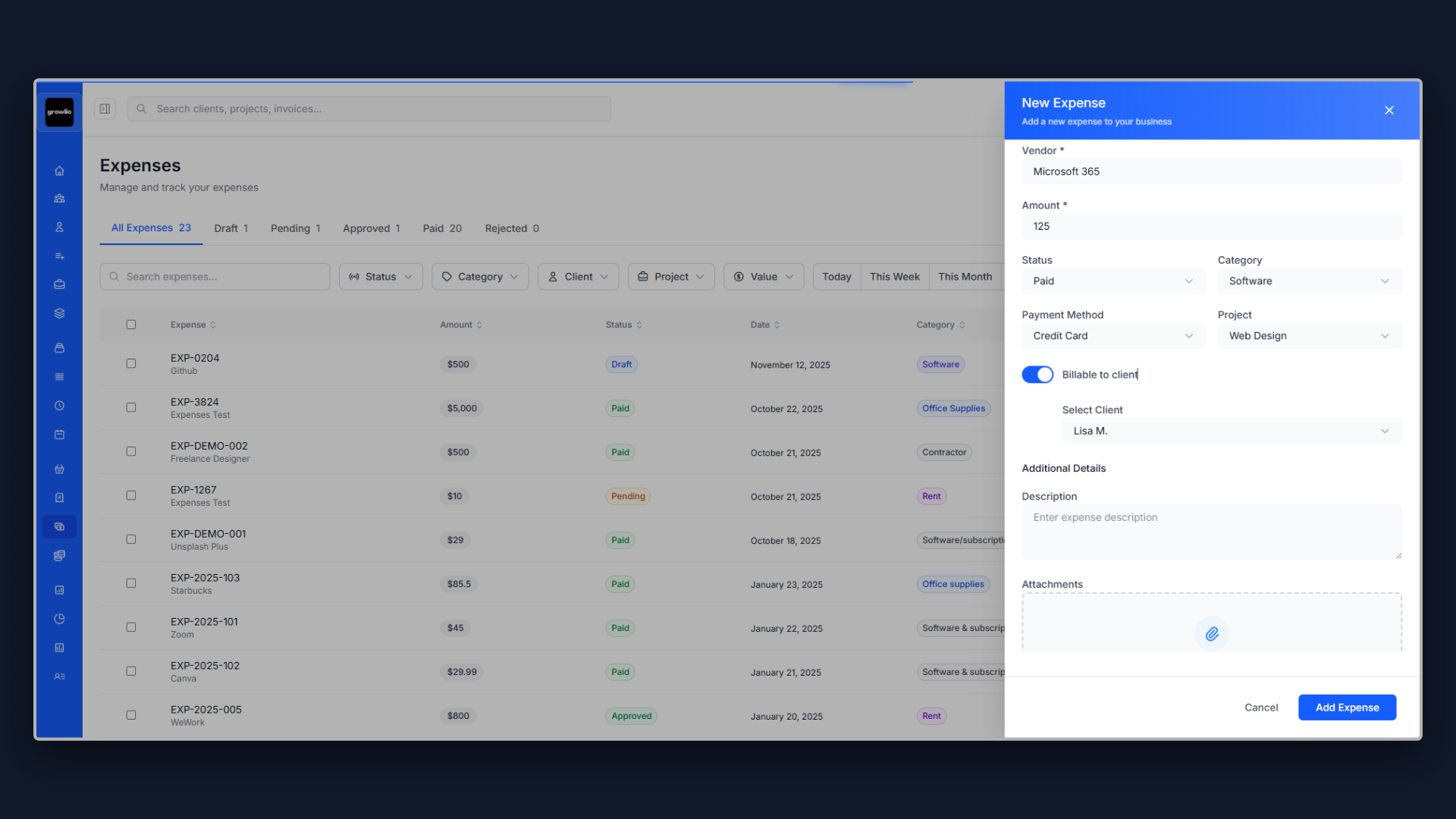Why Facebook Marketing Still Dominates in 2025
With 3 billion monthly active users, Facebook remains the world's largest social media platform and most sophisticated advertising system. Despite predictions of its decline, Facebook (and its ecosystem including Instagram and WhatsApp) generated over $130 billion in advertising revenue in 2024, proving that businesses who master Facebook marketing gain an enormous competitive advantage.
Yet here's what most marketers miss: Facebook isn't just another social media channel—it's a complete marketing ecosystem combining organic community building, precision-targeted paid advertising, detailed analytics, and direct commerce capabilities. The consultants winning the largest Facebook marketing contracts understand this ecosystem approach and propose comprehensive strategies, not just "we'll run some ads for you."
Your Facebook marketing proposal needs to demonstrate that you understand Facebook's algorithm changes, declining organic reach realities, sophisticated advertising capabilities, community building through Groups, and how to integrate paid and organic strategies for maximum ROI. When you position yourself as a Facebook marketing strategist—not just an ad manager—you'll win contracts 3-5x larger than competitors offering basic advertising services.
1. Start With Their Facebook Opportunity Gap
Most businesses know they should be on Facebook but haven't quantified what they're losing by not investing seriously. Begin your proposal by making this cost crystal clear.
Quantify their market opportunity: "Facebook research shows that 74% of your target demographic (women 35-55 with household income above $75,000) actively use Facebook daily, spending an average of 38 minutes per session. Your three main competitors collectively reach an estimated 185,000 people monthly through Facebook—85,000 through organic content and 100,000 through paid advertising—generating approximately 12,500 monthly website clicks worth an estimated $580,000 in annual revenue based on industry conversion rates."
Expose their current Facebook underperformance: "Your Facebook presence currently captures only 4% of this opportunity. Your page has 1,240 followers with an average organic reach of just 62 people per post (5% reach rate). Your most recent post is 23 days old. You're not running paid advertising. You're not utilizing Facebook Groups, Shop features, or events. This dormant presence means you're invisible to 96% of your potential Facebook audience while competitors capture those customers."
Connect to business impact: "At your average customer value of $2,850 and industry-standard 2.8% conversion rate, even capturing 20% of your competitors' Facebook traffic would generate approximately 700 additional monthly leads worth $2 million in annual customer lifetime value. This isn't theoretical—it's the proven opportunity cost of neglecting Facebook marketing."
This opening creates immediate urgency and establishes the stakes. Now they're ready to invest in capturing this opportunity.
2. Conduct a Comprehensive Facebook Audit
Demonstrate expertise by analyzing their current Facebook presence and identifying specific improvement opportunities across organic and paid channels.
Page Optimization Assessment: Profile and cover image optimization, about section completeness and keyword optimization, call-to-action button setup and effectiveness, contact information accuracy and accessibility, hours, services, and business information completeness, link integration (website, Instagram, WhatsApp), custom tabs and page template utilization, verification badge eligibility and status.
Content Performance Analysis: Posting frequency and consistency over past 90 days, engagement rate compared to industry benchmarks (2.5% is average), content type performance (video, image, link, text), optimal posting times based on audience activity, hashtag usage and effectiveness, content themes that resonate vs. underperform.
Audience Insights: Current follower demographics vs. ideal customer profile, audience growth trends (growing, stagnant, declining), geographic concentration and reach, engagement patterns and active user percentage, comparison to competitor audience size and engagement.
Advertising Audit (if running ads): Current campaign structure and objective selection, audience targeting strategy and precision, ad creative quality and variety, bidding strategy and cost efficiency, conversion tracking setup and attribution, ad frequency and audience fatigue indicators, landing page quality and relevance.
Competitive Benchmark Analysis: Top 5 competitors' Facebook presence and strategy, their organic content approach and engagement rates, estimated paid advertising spend and reach, unique tactics or features they're leveraging, opportunities to differentiate and compete.
This comprehensive audit proves you've invested time understanding their specific situation while revealing problems they likely didn't know existed.
3. Present an Integrated Organic + Paid Strategy
The biggest mistake in Facebook marketing proposals is treating organic and paid as separate silos. Present an integrated strategy where each amplifies the other.
Explain the Facebook reality: "Organic reach on Facebook averages just 5.2% of your page followers—meaning unpaid posts reach only 1 in 20 people who chose to follow you. However, strong organic content builds the foundation for effective advertising. Pages with active organic presence see 47% better ad performance than those using Facebook purely for paid promotion. Our strategy integrates both for maximum impact."
Organic Content Strategy (Foundation): Purpose: Build community, maintain engagement with existing audience, provide social proof for ads, create content library for amplification through paid promotion, support SEO and brand authority. Approach: 4-5 weekly posts mixing educational content (40%), engaging questions and polls (25%), customer stories and testimonials (20%), and promotional updates (15%). Video content prioritized (3x higher reach than images). Community management with sub-2-hour response time. Facebook Live sessions monthly for deeper engagement.
Paid Advertising Strategy (Amplification): Purpose: Reach new audiences beyond organic followers, drive specific business objectives (leads, sales, traffic), retarget engaged users who didn't convert, amplify best-performing organic content, achieve measurable ROI quickly. Approach: Campaign structure aligned to customer journey (awareness, consideration, conversion). Sophisticated audience targeting using custom audiences, lookalikes, and interest/behavior segments. Dynamic creative testing to identify winning combinations. Strategic budget allocation prioritizing high-performing campaigns. Conversion tracking and attribution across customer touchpoints.
Integration Tactics: Boost top-performing organic content with paid promotion to multiply reach. Use organic engagement signals to inform ad creative strategy. Retarget users who engage with organic content but don't convert. Build custom audiences from page engagers, video viewers, and post interactions. Create social proof through organic engagement that makes ads more credible. Use paid ads to rapidly grow organic page following with engaged users.
This integrated approach demonstrates strategic sophistication and maximizes the synergy between organic and paid efforts.
4. Detail Your Facebook Advertising Strategy and Tactics
Many clients view Facebook ads as complex and intimidating. Demystify your approach with clear explanation of your advertising strategy.
Campaign Structure by Business Objective: Awareness Campaigns: Reach new audiences with educational content, brand storytelling, and value-focused messaging. Goal: Cost-per-thousand impressions (CPM) under $8. Traffic Campaigns: Drive qualified visitors to key website pages, blog content, and landing pages. Goal: Cost-per-click under $1.20. Engagement Campaigns: Build social proof through likes, comments, shares, and post interactions. Goal: Engagement rate above 4%. Lead Generation Campaigns: Capture contact information through Facebook lead forms or landing page conversions. Goal: Cost-per-lead between $15-$35. Conversion Campaigns: Drive purchases, bookings, or high-value actions. Goal: 3:1 to 6:1 return on ad spend.
Audience Targeting Methodology: Custom Audiences: Website visitors (overall and specific pages), customer list uploads, Facebook page engagers, video viewers, Instagram profile visitors. Lookalike Audiences: 1-3% lookalike models of best customers, top 25% of purchasers by value, engaged email subscribers, high-value website visitors. Interest and Behavior Targeting: Detailed interests relevant to your products/services, life events and milestones matching your offer, purchase behavior and digital activity patterns, job titles and professional interests (B2B).
Creative Strategy and Testing: Multiple creative formats (single image, carousel, video, collection ads). A/B testing ad copy, images, headlines, and calls-to-action. Video content under 15 seconds for attention capture. User-generated content for authenticity and trust. Problem-solution messaging addressing customer pain points. Offer testing (discount vs. free trial vs. value-focused).
Budget Allocation and Management: Recommended starting budget: $2,000-$5,000 monthly (adjust based on business size). Strategic allocation: 30% to testing new audiences and creative, 50% to scaling proven winning campaigns, 20% to retargeting and conversion optimization. Daily budget pacing with automated rules preventing overspend. Weekly optimization adjusting bids and budgets based on performance.
This detailed yet understandable explanation gives clients confidence in your systematic approach and expertise.
5. Address Facebook Groups as a Community Building Tool
Most Facebook marketing proposals ignore Groups—one of the highest-engagement features on the platform. Differentiate yourself by including a Groups strategy.
Explain the Groups opportunity: "Facebook Groups achieve 10-15x higher organic reach than page posts because Facebook's algorithm prioritizes Groups in users' feeds. Groups with 500+ active members become self-sustaining communities that drive consistent traffic, leads, and sales with minimal promotional effort. They transform your Facebook presence from broadcast channel to engaged community."
Present your Groups strategy: Group Creation and Setup: Create branded Group aligned to customer interests (not overt sales pitch). Example: "Creative DIY Home Décor Ideas" for interior design business, not "Smith Interiors Customer Group." Clear rules and guidelines maintaining quality and discouraging spam. Integration with Facebook page (mutual promotion). Exclusive member benefits (early access, special offers, expert advice).
Community Management and Engagement: Daily posts sparking discussions, questions, and member participation. Welcoming new members personally and introducing them to the community. Highlighting member success stories and user-generated content. Weekly themes or challenges encouraging participation. Rapid moderation maintaining quality and removing spam/violations.
Value-First Approach: 90% educational, helpful, community-building content. 10% promotional or business-focused content. Members should get value even if they never purchase. Position your business as helpful expert, not pushy salesperson. Let satisfied customers advocate for your business organically.
Group Growth Tactics: Inviting existing customers and email subscribers. Paid advertising to attract ideal members. Cross-promotion through page posts and Instagram. Partnering with complementary businesses for mutual promotion. Creating valuable lead magnets requiring group membership for access.
Project results: "Groups with 1,000+ engaged members typically drive 150-300 monthly website visits, generate 15-30 leads through organic discussions and recommendations, create strong brand loyalty reducing acquisition costs, and provide valuable market research and customer insights. Most importantly, Groups build defensible community moats that competitors can't easily replicate."
This Groups strategy shows strategic depth and long-term thinking that justifies premium pricing.
6. Explain Your Content Creation and Publishing Strategy
Clients need to understand what content you'll create, when you'll post it, and why it advances their business goals.
Detail your content framework: Content Pillar Approach: We organize content around 3-4 strategic pillars aligned to your business and audience interests. Example for fitness business: Pillar 1 - Workout Tips & Techniques (35% of content), Pillar 2 - Nutrition & Healthy Eating (30%), Pillar 3 - Motivation & Mindset (20%), Pillar 4 - Member Success Stories & Community (15%).
Format Mix for Maximum Engagement: Short-form video (Reels, 15-60 seconds): 40% of content, highest engagement and reach. Single image posts with compelling copy: 25%, efficient to produce and test messaging. Carousel posts (swipe through multiple images): 15%, great for tutorials and comparisons. Facebook Live or long-form video: 10%, builds deeper connection and authority. Link posts driving traffic to website: 10%, directly supports business objectives.
Posting Schedule and Frequency: 4-5 posts weekly providing consistent presence without overwhelming audience. Strategic timing based on when your audience is most active (identified through analytics). Content calendar planned 30 days ahead allowing strategic themes and campaigns. Flexibility for timely, trending, or reactive content opportunities.
Content Creation Process: Monthly strategy session aligning content to business goals and seasonal opportunities. Content calendar developed and submitted for client review and approval. Professional content creation (graphic design, copywriting, video editing). Client approval process (48-hour review window). Scheduled posting with optimal timing. Real-time monitoring for engagement opportunities.
Engagement and Community Management: Responding to all comments within 2 hours during business hours. Proactive engagement with audience members' content. Answering questions and providing helpful information. Identifying and escalating customer service issues. Building relationships with active, engaged community members.
This systematic approach demonstrates professionalism and gives clients confidence their Facebook presence will be consistent and strategic.
7. Define Comprehensive Tracking and Attribution
The downfall of many Facebook marketing programs is inability to prove ROI. Address measurement and attribution proactively.
Explain tracking setup: Facebook Pixel Implementation: Install Facebook tracking pixel on all website pages. Set up custom conversion events (purchases, leads, signups, key actions). Implement enhanced conversion tracking with customer data. Create audiences from pixel data for retargeting. Track customer journey from ad impression to final conversion.
UTM Parameter Tracking: Custom URL parameters on all Facebook links tracking source/medium/campaign. Integration with Google Analytics for cross-platform attribution. Ability to identify which specific posts and ads drive website traffic. Campaign-level performance tracking and ROI calculation.
Lead Tracking and CRM Integration: Facebook lead form integration capturing contact information seamlessly. Automatic lead delivery to your CRM or email system. Lead source tagging identifying Facebook-generated opportunities. Closed-loop reporting connecting leads to eventual sales. Customer lifetime value calculation for Facebook-acquired customers.
Attribution Modeling: 7-day click and 1-day view attribution as baseline. Multi-touch attribution recognizing Facebook's role in customer journey. Comparison of first-click, last-click, and linear attribution models. Understanding Facebook's role in discovery vs. conversion.
Commit to transparency: "You'll have complete visibility into how Facebook marketing drives business results. Every dollar spent on advertising will be tracked to resulting actions, leads, and revenue. No black box, no vanity metrics without business context, just clear ROI demonstration."
This measurement rigor differentiates you from competitors who report likes and impressions without connecting to business outcomes.
8. Include Facebook Marketing Case Studies
Make your Facebook expertise credible with specific client results demonstrating your proven methodology.
Case Study 1: Local Home Services Business (HVAC)
Challenge: Seasonal business struggling with awareness, relying entirely on expensive home service lead aggregators, inconsistent revenue across seasons.
Strategy: Built Facebook page from 340 to 4,200 local followers through awareness campaigns and engagement content. Created "Home Comfort Tips" Facebook Group growing to 1,850 local homeowners. Ran seasonal paid campaigns for AC (summer) and heating (winter) services. Implemented service reminder sequences through Messenger.Results (12 months): Generated 680 qualified leads at $22 average cost-per-lead versus $85 on lead aggregator platforms. Converted 94 new customers directly from Facebook marketing. $268,000 in revenue attributed to Facebook with 4.8:1 ROAS. Built owned audience reducing dependency on expensive third-party leads.
Case Study 2: E-commerce Fashion Retailer
Challenge: High customer acquisition cost ($140) from Google Ads, limited brand awareness, low repeat purchase rate.
Strategy: Product catalog integration for dynamic ads showing relevant products. Lookalike audiences from best customer segments. Video ads showcasing styling and product features. Abandoned cart retargeting sequences. VIP customer group for exclusive offers and early access.
Results (8 months): Reduced customer acquisition cost to $47 (66% improvement). Generated $285,000 in attributed revenue from $48,000 ad spend (5.9:1 ROAS). Increased repeat purchase rate 35% through community engagement. Built brand awareness with 85,000 average monthly reach.
Case Study 3: B2B Professional Services
Challenge: Difficulty reaching decision-makers, long sales cycles, skepticism about Facebook for B2B marketing.
Strategy: Thought leadership content establishing expertise. Facebook lead ads offering valuable industry reports and tools. Retargeting engaged users with case studies and consultation offers. Private Facebook Group for industry professionals providing networking value.
Results (10 months): Generated 340 qualified B2B leads at $68 cost-per-lead. 47 leads converted to discovery calls, 12 became clients worth $340,000 in total contract value. Established CEO as industry thought leader with 15,000+ monthly content reach. Proved Facebook viability for B2B despite skepticism.
These diverse examples prove Facebook marketing delivers results across business types and makes your proposal compelling and credible.
9. Detail Your Reporting and Communication Approach
Clear, regular communication prevents misunderstandings and keeps clients confident in their investment.
Weekly Quick Updates (Delivered Monday AM): Key metrics snapshot (reach, engagement, clicks, leads, spend). Top-performing content highlights. Any significant developments or opportunities. Immediate action items or approvals needed.
Monthly Comprehensive Reports: Executive summary of month's performance vs. goals. Detailed metrics across organic and paid efforts. Content performance analysis (what worked and why). Audience growth and demographic insights. Advertising campaign results with ROAS calculations. Budget pacing and spend allocation. Competitive activity observations. Strategic recommendations for next month. 45-minute video call discussing results and upcoming strategy.
Quarterly Strategic Reviews: Comprehensive performance analysis vs. quarterly and annual goals. Audience and community growth trends. Content strategy effectiveness and refinement recommendations. Advertising optimization opportunities. Competitive landscape changes. Strategic planning for next quarter with budget recommendations.
Real-Time Dashboard Access: 24/7 access to live dashboard showing key metrics. Ability to drill into specific campaigns, posts, and performance data. Transparent view of exactly where ad budget is being allocated. No waiting for scheduled reports to understand current performance.
This communication structure provides accountability, transparency, and keeps clients engaged throughout your partnership.
10. Make Getting Started Seamless
Remove every obstacle between proposal approval and campaign launch with crystal clear next steps.
"Ready to capture your share of Facebook's 3 billion users and dominate your local market? Here's exactly what happens next: Step 1: Sign this proposal and return by [date] to lock in your start date. Step 2: Complete our 15-minute onboarding questionnaire covering goals, target audience, brand voice, and assets. Step 3: Grant us admin access to your Facebook page and Ad Account (we'll send step-by-step instructions). Step 4: We'll schedule 60-minute strategy kickoff call within 48 hours of access. Step 5: Facebook pixel installation and tracking setup completed within 3 business days. Step 6: First content calendar and ad campaigns delivered for approval within 7 days. Step 7: Campaigns launch and we begin driving results within 10 business days of proposal approval."
Address common concerns: "What if Facebook advertising doesn't work for my business? We'll prove value within 60 days or provide strategic recommendations for alternative approaches. Most clients see positive ROI within 45 days. What happens to my page if we stop working together? You maintain complete ownership of your page, content, and audiences—we're just managing it for you. Can I adjust the budget based on results? Absolutely. We recommend starting at proposed budget for 90 days to gather sufficient data, then we can optimize allocation based on proven results."
Include simple approval section: "Let's dominate Facebook in your market: Approved by: _____________ Date: _____________ Company: _____________ Email: _____________ Phone: _____________"
The simpler you make approval and onboarding, the faster you begin delivering results and earning revenue.
Final Thoughts on Facebook Marketing Proposals
Facebook remains the most powerful advertising platform and community-building tool for most businesses. The consultants who win the best clients don't just promise to "post on Facebook" or "run some ads"—they present comprehensive strategies integrating organic community building with sophisticated paid advertising, all tied to measurable business outcomes.
Your Facebook marketing proposal should quantify the massive opportunity they're missing on the world's largest social platform, demonstrate expertise through comprehensive audits and competitive analysis, present integrated organic and paid strategies working in synergy, showcase advanced tactics like Facebook Groups and sophisticated audience targeting, commit to rigorous tracking and ROI measurement, and prove your capabilities with diverse case studies showing real revenue results.
Customize every proposal to the client's specific business model, target audience, and competitive landscape. Show you understand their customers and how to reach them on Facebook. Present yourself as a strategic partner who will drive measurable business growth, not just a social media manager who posts content. And make starting your engagement effortless.
When you elevate from tactical Facebook services to strategic Facebook marketing partner, you'll win larger contracts, work with better clients, command premium pricing, and deliver results that transform their business. Your proposal is the first impression—make it reflect the sophistication and results you'll deliver.
